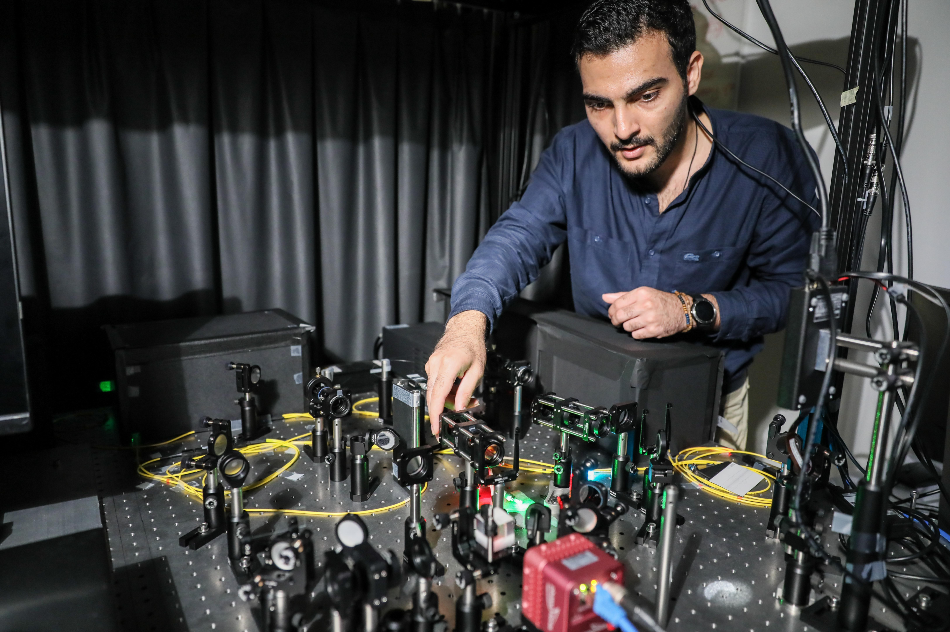Jul 16 2020
At École polytechnique fédérale de Lausanne (EPFL), researchers have developed a new technique to automatically work out the data that must be fed to a complex system such as a fiber-optic network to achieve the preferred outcome.

Image Credit: EPFL.
The new technique could prove beneficial, particularly in medicine, robotics, and image projection.
Input and output form part of any kind of system, where an action takes place in between. However, when that action is especially complicated or needs huge amounts of synchronized data, it would be challenging to identify the type of input required to obtain the correct output.
Scientists from the Laboratory of Applied Photonics Devices (LAPD) and Optics Laboratory (LO) at EPFL have discovered a solution. They have created an algorithm that can identify what data must be fed into a fiber-optic network to obtain the preferred outcome at the other end. The study was recently reported in the Nature Machine Intelligence journal.
The team designed an image projection system to illustrate their method. In a maze-like network of lasers, light beams travel from one magnifying glass to the other and from one fiber to the next, carrying coded data along with them. On the other side, the data is decoded on a little screen, where an array of green images occur—a strange ghost, a wandering person, and a galloping horse.
Fiber optics are complex systems. Without our algorithm, the information needed to create each image would have to be recalculated each time. But with our algorithm, the system learns how to do that automatically.
Babak Rahmani, PhD Student, Laboratory of Applied Photonics Devices, EPFL
The funny animations by the scientists are just a demonstration of the several possible applications of their solution in a variety of fields.
“It could be used to help a robotic arm learn a specific gesture and how to control it,” states Christophe Moser, who runs the LAPD. In the field of medicine, it could improve endoscopic methods that make use of lasers to develop some impact on particular parts of the body.
On a wider scale, the algorithm could make it simpler to project light or induce an effect or action remotely, or to make holograms and 3D images.
Two is Better than One
The invention relies on the principle of artificial neural networks.
“These networks are computer systems inspired by biological neural networks and the human brain,” states Demetri Psaltis, who runs the LO and is a specialist in this technology. They are the fundamentals of artificial intelligence and enable the systems they are used in to use machine learning.
Although the neural-network technique is well-known, the fact the EPFL researchers’ solution involves two systems that work together makes their work original.
It’s a bit like learning to play tennis. First, you just learn how to hit the ball. Once you’ve got the hang of that, you move on to more difficult shots, like the backhand, the overhead and the volley. Our algorithm works the same way.
Demetri Psaltis, Optics Laboratory, EPFL
Using artificial intelligence to enhance complex systems
Video Credit: EPFL.
Journal Reference:
Rahmani, B., et al. (2020) Actor neural networks for the robust control of partially measured nonlinear systems showcased for image propagation through diffuse media. Nature Machine Intelligence. doi.org/10.1038/s42256-020-0199-9.